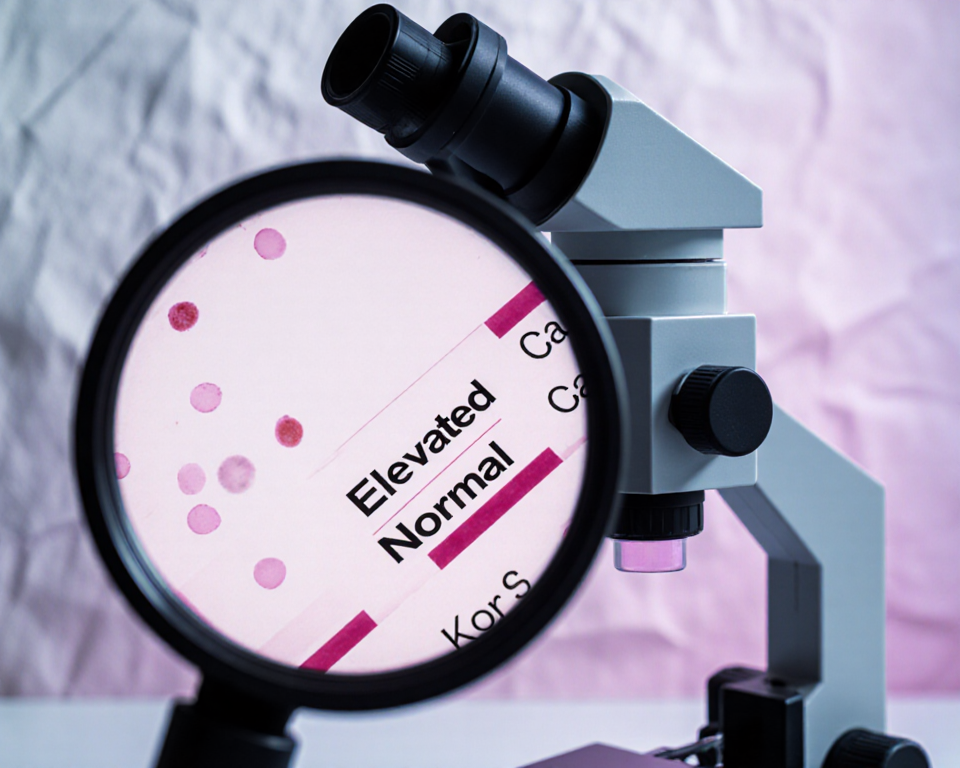Blood Test Normal Range: What to Do With the Next Steps After an Abnormal Result

When your lab results come back, the first thing you’ll notice is a list of numbers and a few lines that read “normal range.” It’s a little like a weather report: a forecast of what’s expected, a warning of what’s not. But what happens when the forecast says you’re “unseasonably hot” or “unexpectedly chilly”? In this guide, we’ll walk through the normal ranges, explain why they matter, and give you a clear roadmap for the next steps after an abnormal result.
Understanding Blood Test Normal Ranges
What Are Normal Ranges?
A normal range is the span of values that most healthy people fall into for a particular test. Think of it as the “goldilocks zone” – not too high, not too low. For example, a normal fasting glucose range might be 70–99 mg/dL. These ranges are derived from large population studies and serve as a baseline for comparison.
Why They Vary
Normal ranges aren’t one-size-fits-all. They can shift based on:
- Age – older adults may have slightly higher cholesterol ranges.
- Sex – women’s iron levels are typically lower than men’s.
- Laboratory methods – different machines and reagents can produce slightly different numbers.
- Geographic and ethnic factors – certain populations have distinct baseline levels.
Because of these variables, a number that’s “abnormal” in one lab might be perfectly normal in another. That’s why it’s always good to look at the reference range that came with your report.
Decoding an Abnormal Result
Common Reasons for Abnormal Numbers
When a value falls outside the normal range, it can signal many things:
- Transient changes (e.g., dehydration, recent exercise, or a cold).
- Lifestyle factors (diet, alcohol consumption, medication side effects).
- Chronic conditions (diabetes, thyroid disorders, anemia).
- Undiagnosed illnesses that may need further investigation.
It’s important not to jump to conclusions. A single abnormal number is just a clue, not a diagnosis.
How to Read Your Report
Your lab report usually lists:
- Test name – e.g., “Serum Creatinine.”
- Result – the numeric value.
- Reference range – the normal window.
- Units – e.g., mg/dL, µmol/L.
A quick visual check can tell you if the result is above or below the range. If it’s close to the edge, the lab may note it as “borderline” or “elevated.”
> “A single data point is just a number; the story comes from context.” – Dr. Emily Carter, Clinical Pathologist
Next Steps After an Abnormal Result
Confirm with a Repeat Test
A single abnormal result can be a false alarm. Factors like a recent meal or a bout of illness can skew numbers. A repeat test, ideally under similar conditions (fasting, same time of day), helps confirm whether the abnormality persists.
Discuss with Your Doctor
Your primary care provider is the best person to interpret the results in the context of your overall health. They’ll ask questions such as:
- “Have you noticed any symptoms?”
- “Are you on any new medications?”
- “What’s your recent diet like?”
This conversation is the bridge between numbers and meaningful action.
Lifestyle Adjustments
Many abnormal results can be improved with simple lifestyle changes:
- Hydration – drinking enough water can normalize electrolytes.
- Balanced diet – reduce processed foods, increase fiber.
- Regular exercise – helps control blood sugar and cholesterol.
- Stress management – mindfulness or yoga can lower cortisol.
These adjustments are like tuning a musical instrument; small tweaks can bring harmony back to your health.

Specialist Referrals
If the abnormal result points to a specific organ or system, your doctor may refer you to a specialist. For instance:
- High liver enzymes → hepatologist
- Low thyroid hormones → endocrinologist
- Abnormal blood counts → hematologist
Specialists can run more targeted tests and craft a precise treatment plan.
Practical Tips to Keep Your Numbers in Check
Diet and Hydration
- Stay hydrated – aim for 8–10 cups of water a day.
- Watch sodium – too much can raise blood pressure.
- Fiber-rich foods – oats, beans, and leafy greens support gut health.
Exercise
- Aim for 150 minutes of moderate activity per week.
- Include strength training twice a week to build muscle mass, which helps regulate glucose.
Stress Management
- Short breaks during work can reduce cortisol spikes.
- Deep breathing or progressive muscle relaxation can calm the nervous system.
A Lighthearted Anecdote and a Quote
I once had a friend who, after receiving an abnormal cholesterol result, tried to “fix” it by eating only kale for a month. He returned for a follow‑up and said, “I feel like a salad, but my cholesterol is still high!” It turns out a balanced diet, not a kale-only diet, is the key.
> “Health is not just about the numbers on a chart; it’s about the story they tell.” – Dr. Maya Patel
The Road Ahead: Turning Numbers into Action
Your blood test normal range is a compass, not a verdict. When you spot an abnormal result, treat it as a prompt to investigate, not a diagnosis. By confirming with a repeat test, consulting your doctor, making lifestyle tweaks, and possibly seeing a specialist, you’re not just reacting—you’re taking charge of your health narrative.
Remember, every abnormal number is an opportunity to learn more about your body and make smarter choices. So next time your report says something’s off, don’t panic; pick up that phone, schedule that appointment, and let the numbers guide you toward better health.